Sybil Ludington: Courageous American Girl Who Rode For Independence
A. Sutherland - AncientPages.com - Sybil Ludington (1761 – 1839) was a celebrated hero of the American Revolutionary War (1775–1783), also known as the American War of Independence.
On the night of April 26, 1777, at the age of 16, Sybil rode to warn militia forces in Putnam County, New York, and Danbury, Connecticut, that British troops were approaching.
Young Sybil rode all night to warn of danger. Illustration by Karen B. Winnick (Fair Use) - Image source - Illustrations of Sybil's journey can be seen in the book Sybil's Night Ride
The ride was similar to those performed by William Dawes and Paul Revere (in Massachusetts, in April 1775) and Jack Jouett (in Virginia, 1781). However, Sybil was much younger and rode more than twice as far as Paul Revere did in 1775.
Who Was Sybil Ludington?
She was a courageous patriot who risked her life to alert the rebels to the approaching British troops. Sybil was born in Paterson, New York, in 1761. Her father was Colonel Henry Ludington, who belonged to the Dutchess County militia and commanded the rebel troops in southeastern New York.
Sybil, the family’s eldest daughter, helped at home by spinning, knitting, weaving, sewing, and participating in many other household works.
When she was 16, her mother expected her to begin acting like a young lady, but Sybil - tired of being ruled continuously by the British - had other plans. She wanted to be in the militia to help her and others to feel free and independent.
One day, an exhausted messenger came to the family of Ludington’s house to inform them that the British were planning to attack Danbury, Connecticut, the supply center for the Continental Army, and there were only 150 militiamen present to protect the town in Danbury. The tired messenger could not continue his vital mission to warn the people living in the countryside about the attack.
Someone had to do it, but Sybil’s father was in charge of the militia at the same time, so he could not leave. Sybil was not afraid of danger and was ready to do whatever was necessary to help.
 Left: Grave of Sybil Ludington, source ; Right: Sybil Ludington April 5th, 1761 to February 26th, 1839, source
Left: Grave of Sybil Ludington, source ; Right: Sybil Ludington April 5th, 1761 to February 26th, 1839, source
Colonel Ludington was always proud of his daughter. He permitted Sybil to ride her horse, Star, and gather his men.
He gave her a long stick to knock on doors and instructed her to tell his men to meet him at the Ludington Mill by daybreak. The situation was dangerous because the British had already sieged Danbury, which was only 25 miles (40 km) from Sybil's home.
In the meantime, he had to stay put, summon, and organize his patriot army of soldiers to stand against the British, but he agreed to his daughter’s 40-mile-long night trip.
She took her horse, Star, and immediately left her house. She rode from one home to another to knock on the door and shout the warning about the British. Many people were already sleeping, so instead, neighbors had to help her by calling each other. Those who were already awakened rushed to ring the town bell.
Sybil’s night job was not finished yet. Her next mission was to warn the men in the regiment.
As she rode in the darkness, she saw British soldiers not far from her, so she and her horse, Star, hid behind a tree to avoid the danger of being exposed. Her ride was not a comfortable and quiet journey. She withstood rainstorms and muddy, rugged roads and rode with her Star through the area, both forested and deceitful.
When she reached the next town, Stormville, the alarm had already begun to sound. Someone from another town had already come with the news about the British troops, and Sybil and her horse could return home. When she arrived home, more than 400 men were ready to march. Sibyl was exhausted but happy; her night mission was accomplished. The only she needed now was to sleep.
She knew she did her part in the war for independence.
The troops pushed the British militia back in the Battle of Ridgefield, where on April 27, 1777, American forces under the command of Major General David Wooster attacked the retreating British troops under Major General William Tryon in Ridgefield.
Both the neighborhood of Fredericksburg and George Washington recognized and honored Sybil Ludington's ride. Until the end of the war, Sybil served as a messenger. She served her country well and was praised for her courage and patriotism by General Washington and even Statesman Alexander Hamilton, who wrote to her, praising her achievement. At the age of twenty-three, Sybil was married to Edmond Ogden. She had six children and lived to be seventy-eight years old.
See also: More About History
Her children and grandchildren eagerly listened to a story about a brave 16-year-old girl who did not hesitate to risk her life to fulfill the mission.
They were proud of this girl – she was their grandmother and great-grandmother.
Ludington has been widely celebrated since around 1900. Memorial statues honor her, and books have been written about her. She also appeared on a United States Bicentennial postage stamp, released on March 25, 1975, which depicts her on her horse, Star.
Updated on August 17, 2024
Written by – A. Sutherland - AncientPages.com Senior Staff Writer
Copyright © AncientPages.com All rights reserved. This material may not be published, broadcast, rewritten or redistributed in whole or part without the express written permission of AncientPages.com
Expand for referencesReferences:
Vincent T. Dacquino, Patriot Hero of the Hudson Valley: The Life and Ride of Sybil Ludington
Boyajian M. Sybil Ludington: Patriot Rider of the American Revolution
More From Ancient Pages
-
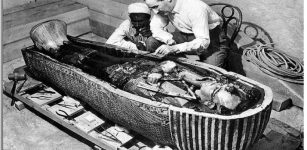 On This Day In History: King Tut’s Tomb Is Unsealed And Opened – On Feb 16,1923
News | Feb 16, 2017
On This Day In History: King Tut’s Tomb Is Unsealed And Opened – On Feb 16,1923
News | Feb 16, 2017 -
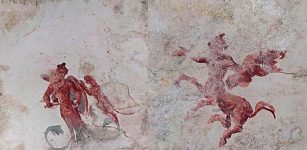 Sphinx Room Discovered At Emperor Nero’s Famed Domus Aurea (Golden House)
Archaeology | May 9, 2019
Sphinx Room Discovered At Emperor Nero’s Famed Domus Aurea (Golden House)
Archaeology | May 9, 2019 -
 Unexplained Ancient Wars In America – Knowledge Of Ancient High-Tech Weapons? – Part 1
Ancient Mysteries | Sep 29, 2020
Unexplained Ancient Wars In America – Knowledge Of Ancient High-Tech Weapons? – Part 1
Ancient Mysteries | Sep 29, 2020 -
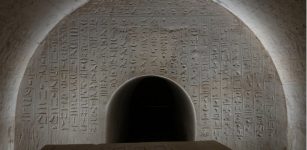 Magnificent Decorated Tomb Of Scribe Unearthed At Abusir Sheds New Light On Ancient Egyptian History
Archaeology | Nov 8, 2023
Magnificent Decorated Tomb Of Scribe Unearthed At Abusir Sheds New Light On Ancient Egyptian History
Archaeology | Nov 8, 2023 -
 Can Stonehenge Be Saved From Bulldozers Or Have Druids Been Defeated?
News | Nov 10, 2020
Can Stonehenge Be Saved From Bulldozers Or Have Druids Been Defeated?
News | Nov 10, 2020 -
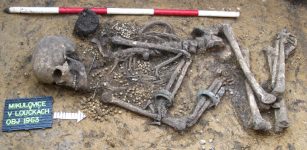 Central European Prehistory Was Highly Dynamic – New Study Shows
Archaeology | Aug 27, 2021
Central European Prehistory Was Highly Dynamic – New Study Shows
Archaeology | Aug 27, 2021 -
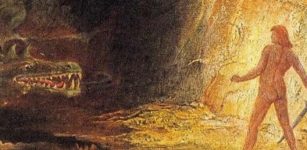 Sigurd Fafnirsbane – Legendary Dragon Slaying Warrior And His Magical Sword
Featured Stories | Oct 30, 2017
Sigurd Fafnirsbane – Legendary Dragon Slaying Warrior And His Magical Sword
Featured Stories | Oct 30, 2017 -
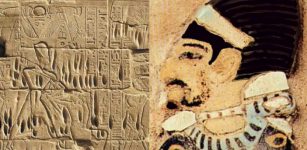 Mysterious Shasu – Bandit Canaanites Or Israelites?
Civilizations | Jan 14, 2019
Mysterious Shasu – Bandit Canaanites Or Israelites?
Civilizations | Jan 14, 2019 -
 Has A 12,000-Year-Old Underwater City Been Discovered Off The Coast Of Louisiana?
Archaeology | Mar 9, 2022
Has A 12,000-Year-Old Underwater City Been Discovered Off The Coast Of Louisiana?
Archaeology | Mar 9, 2022 -
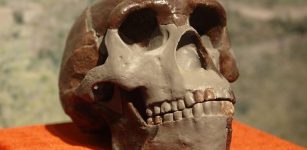 Sinuses Reveal More About The Evolution Of Ancient Humans
Archaeology | Oct 29, 2022
Sinuses Reveal More About The Evolution Of Ancient Humans
Archaeology | Oct 29, 2022 -
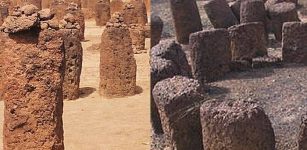 Senegambia’s Circles: Largest Cluster Of Megalithic Structures Of Lost Civilization On Earth
Featured Stories | Jan 3, 2020
Senegambia’s Circles: Largest Cluster Of Megalithic Structures Of Lost Civilization On Earth
Featured Stories | Jan 3, 2020 -
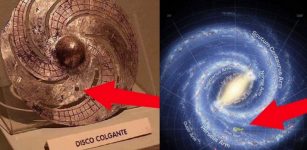 Mysterious 2,000-Year-Old Disco Colgante – Unknown High-Tech Device, Representation Of A Spiral Galaxy Or Something Else?
Artifacts | Nov 20, 2020
Mysterious 2,000-Year-Old Disco Colgante – Unknown High-Tech Device, Representation Of A Spiral Galaxy Or Something Else?
Artifacts | Nov 20, 2020 -
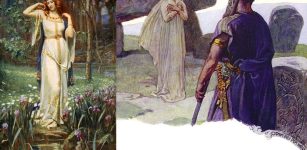 Unusual Power Of Seidr: Norse Shamans Used Magic To Alter Destiny And See The Future
Featured Stories | Oct 14, 2017
Unusual Power Of Seidr: Norse Shamans Used Magic To Alter Destiny And See The Future
Featured Stories | Oct 14, 2017 -
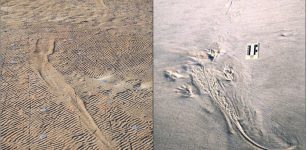 Ancient Giant Amphibians Swam Like Crocodiles 250 Million Years Ago – New Study
Archaeology | Mar 31, 2023
Ancient Giant Amphibians Swam Like Crocodiles 250 Million Years Ago – New Study
Archaeology | Mar 31, 2023 -
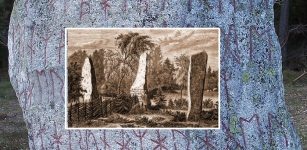 Björketorp Runestone With Frightening Message Is Still Untouched In Blekinge, Sweden
Featured Stories | Mar 19, 2023
Björketorp Runestone With Frightening Message Is Still Untouched In Blekinge, Sweden
Featured Stories | Mar 19, 2023 -
 ‘Incredibly Rare’ Roman Tomb Unearthed Near London Bridge Station
Archaeology | Jun 13, 2023
‘Incredibly Rare’ Roman Tomb Unearthed Near London Bridge Station
Archaeology | Jun 13, 2023 -
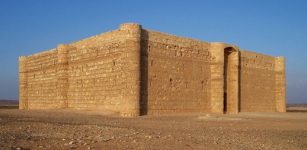 Strange Desert Castle Qasr Kharana In Jordan
Featured Stories | Oct 1, 2019
Strange Desert Castle Qasr Kharana In Jordan
Featured Stories | Oct 1, 2019 -
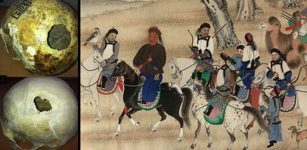 Siberia Had A Major Skull Surgery Center 2,500 Years Ago
Ancient History Facts | Jul 19, 2019
Siberia Had A Major Skull Surgery Center 2,500 Years Ago
Ancient History Facts | Jul 19, 2019 -
 Peculiar Neolithic Anomaly Investigated In Scotland
Featured Stories | Apr 27, 2024
Peculiar Neolithic Anomaly Investigated In Scotland
Featured Stories | Apr 27, 2024 -
 Angkor Wat: Pre-Industrial City’s Downfall And Climate Change
Archaeology | Apr 18, 2020
Angkor Wat: Pre-Industrial City’s Downfall And Climate Change
Archaeology | Apr 18, 2020

